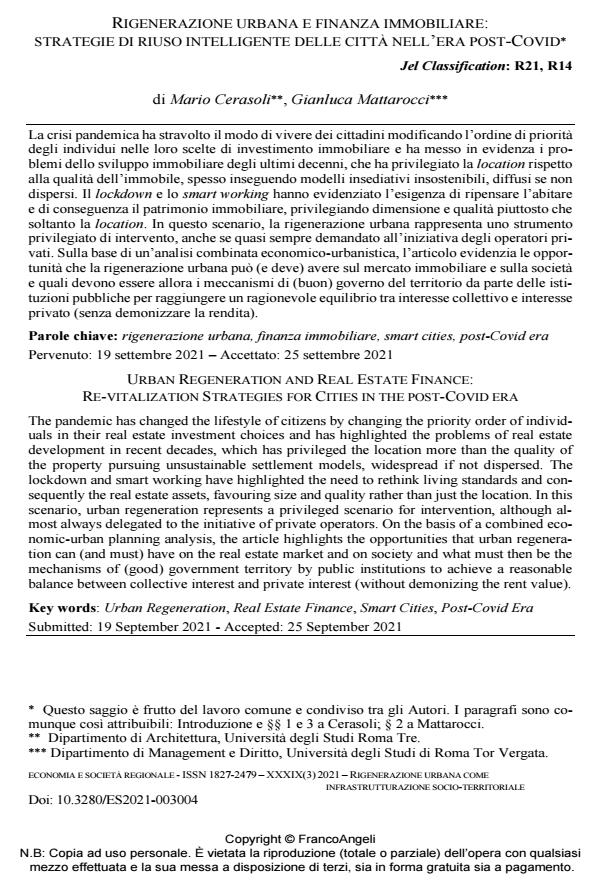Urban regeneration and real estate finance: re-vitalization strategies for cities in the post-covid era
Journal title ECONOMIA E SOCIETÀ REGIONALE
Author/s Mario Cerasoli, Gianluca Mattarocci
Publishing Year 2022 Issue 2021/3
Language Italian Pages 16 P. 45-60 File size 497 KB
DOI 10.3280/ES2021-003004
DOI is like a bar code for intellectual property: to have more infomation
click here
Below, you can see the article first page
If you want to buy this article in PDF format, you can do it, following the instructions to buy download credits

FrancoAngeli is member of Publishers International Linking Association, Inc (PILA), a not-for-profit association which run the CrossRef service enabling links to and from online scholarly content.
The pandemic has changed the lifestyle of citizens by changing the priority order of individu-als in their real estate investment choices and has highlighted the problems of real estate de-velopment in recent decades, which has privileged the location more than the quality of the property pursuing unsustainable settlement models, widespread if not dispersed. The lock-down and smart working have highlighted the need to rethink living standards and conse-quently the real estate assets, favouring size and quality rather than just the location. In this scenario, urban regeneration represents a privileged scenario for intervention, although almost always delegated to the initiative of private operators. On the basis of a combined economic-urban planning analysis, the article highlights the opportunities that urban regeneration can (and must) have on the real estate market and on society and what must then be the mecha-nisms of (good) government territory by public institutions to achieve a reasonable balance between collective interest and private interest (without demonizing the rent value).
Keywords: Urban Regeneration, Real Estate Finance, Smart Cities, Post-Covid Era
Jel codes: R21, R14
Mario Cerasoli, Gianluca Mattarocci, Rigenerazione urbana e finanza immobiliare: strategie di riuso intelligente delle città nell’era post-covid in "ECONOMIA E SOCIETÀ REGIONALE " 3/2021, pp 45-60, DOI: 10.3280/ES2021-003004